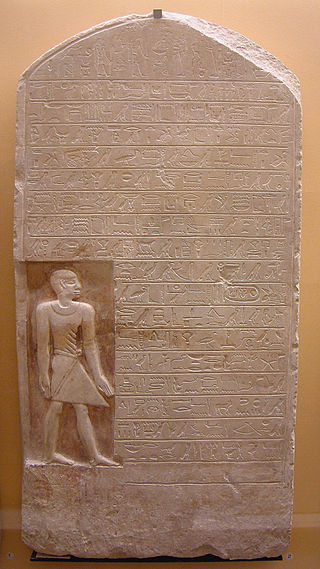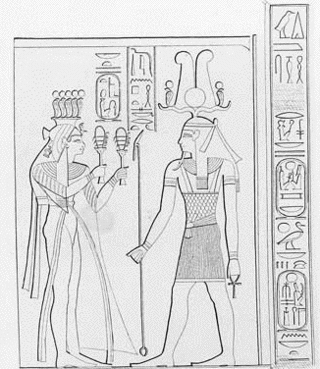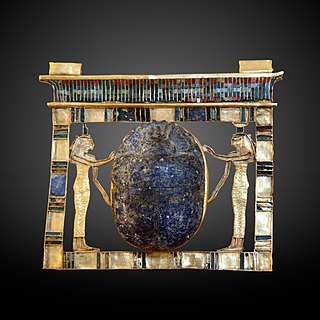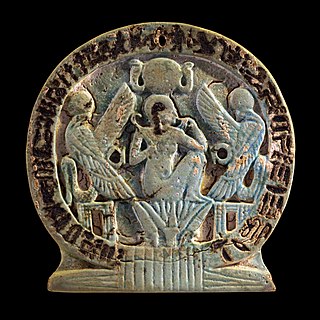
The Museo Egizio or Egyptian Museum is an archaeological museum in Turin, Italy, specializing in Egyptian archaeology and anthropology. It houses one of the largest collections of Egyptian antiquities, with more than 30,000 artifacts, and is considered the second most important Egyptology collection in the world, after the Egyptian Museum of Cairo. In 2019, it received 853,320 visitors, making it one of the most visited museums in Italy.

Thutmose I was the third pharaoh of the 18th Dynasty of Egypt. He received the throne after the death of the previous king, Amenhotep I. During his reign, he campaigned deep into the Levant and Nubia, pushing the borders of Egypt farther than ever before in each region. He also built many temples in Egypt, and a tomb for himself in the Valley of the Kings; he is the first king confirmed to have done this.

The Turin King List, also known as the Turin Royal Canon, is an ancient Egyptian hieratic papyrus thought to date from the reign of Pharaoh Ramesses II, now in the Museo Egizio in Turin. The papyrus is the most extensive list available of kings compiled by the ancient Egyptians, and is the basis for most chronology before the reign of Ramesses II.

Djedkare Isesi was a pharaoh, the eighth and penultimate ruler of the Fifth Dynasty of Egypt in the late 25th century to mid-24th century BC, during the Old Kingdom. Djedkare succeeded Menkauhor Kaiu and was in turn succeeded by Unas. His relationship to both of these pharaohs remain uncertain, although it is often conjectured that Unas was Djedkare's son, owing to the smooth transition between the two.

Ankhu was an Egyptian vizier of Upper Egypt during the early 13th Dynasty, who lived around 1750 BC. He is believed to have resided in Thebes.

The ancient Egyptian noble Ibi was chief steward of the God's Wife of Amun, Nitocris I, during the reign of the 26th Dynasty pharaoh Psamtik I.

Iset Ta-Hemdjert or Isis Ta-Hemdjert, simply called Isis in her tomb, was an ancient Egyptian queen of the Twentieth Dynasty; the Great Royal Wife of Ramesses III and the Royal Mother of Ramesses VI.

Khaemwaset or Khaemwase was an ancient Egyptian prince, a son of Pharaoh Ramesses III. His name can also be found as Ramesses Khaemwaset.

The National Archaeological Museum of Florence is an archaeological museum in Florence, Italy. It is located at 1 piazza Santissima Annunziata, in the Palazzo della Crocetta.

Paser was an ancient Egyptian noble who served as vizier during the reigns of Seti I and Ramesses II in the 19th Dynasty. He would later also become High Priest of Amun.
Sesheshet, occasionally known as Sesh, was the mother of King Teti, the first and founding pharaoh of the Sixth Dynasty of Ancient Egypt. She was instrumental in enabling her son to gain the throne and reconciling two warring factions of the royal family.

Meru was an Ancient Egyptian official under king Mentuhotep II in the Eleventh Dynasty, around 2000 BC. Meru was overseer of sealers at the royal court and therefore one of the highest state officials.
Merefnebef, also called Unisankh and Fefi, was a vizier from the Sixth Dynasty of Egypt. He first served at the court of Teti, possibly became vizier during the reign of Userkare, and was dismissed during the reign of Pepi I.
Iunmin was a vizier from the Fourth Dynasty of Egypt. He was possibly a son of king Khafre. He served as vizier towards the end of the dynasty, possibly during the reign of his brother Menkaure.

The Twenty-fourth Dynasty of Egypt is usually classified as the fourth Dynasty of the Ancient Egyptian Third Intermediate Period.

Osorkon C was a Great Chief of the Ma and a governor of Sais in Lower Egypt, during the 22nd Dynasty.

"Khonsuemheb and the ghost", often known simply as A ghost story, is an ancient Egyptian ghost story dating back to the Ramesside period. Its protagonist is a priest named Khonsuemheb and the story revolves around his encounter with a restless ghost.

Iymeru was an ancient Egyptian vizier in office during the 13th Dynasty.
Butehamun was an Egyptian scribe born and raised in or around Deir el-Medina during the reign of Ramesses XI, the tenth and final pharaoh of the Twentieth Dynasty of Egypt. Butehamun was the son of Thutmose of Deir el-Medina, who was also a scribe, and a member of a family of scribes dating back to the early Twentieth Dynasty.















